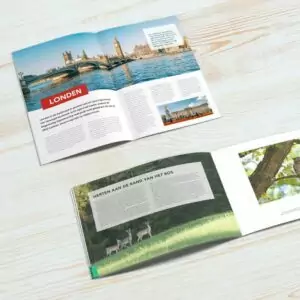Cover Letter Examples and Samples
Cover Letter Examples and Samples 2023
The journey of securing a dream job often begins with crafting a resume that speaks to our qualifications. But accompanying that resume is another powerful tool, a cover letter, that can be the gateway to opportunities. For many job seekers, particularly students, understanding the nuances of a cover letter is essential. The content of a cover letter can differentiate one candidate from another, showcasing individuality, enthusiasm, and alignment with the company’s values. This article aims to elucidate the intricacies of cover letters, its significance, and how to create a standout piece that can leave a lasting impression on recruiters.
What Is a Cover Letter Example?
A cover letter is a document that accompanies a resume when applying for a job. While a resume typically provides a concise overview of an applicant’s career history, skills, and achievements, the cover letter offers a platform for the candidate to introduce themselves personally. It presents an opportunity for the candidate to express their enthusiasm for the role, explain how their skills align with the job requirements, and convey their cultural fit with the company. In essence, it allows the applicant to tell a story that the resume alone cannot capture.
Why Do Students Need to Practice Writing Cover Letter Examples?
Students, as budding professionals, are at a critical juncture in their career path. They are on the threshold of stepping into the industry, and their initial impressions can shape their career trajectory. Therefore, practicing the art of writing cover letters becomes paramount for them.
Firstly, students might not have an extensive resume given their limited experience in the industry. A cover letter compensates for that by providing context, explaining their passion for the chosen field, and detailing any academic or extracurricular experiences that make them suitable for the job.
Secondly, it’s a competitive job market out there. The difference between securing an interview and being overlooked could hinge on a well-written cover letter. Hiring managers and recruiters receive hundreds, if not thousands, of applications. A personalized, compelling cover letter can make an applicant stand out.
Lastly, the act of writing cover letters hones one’s writing and self-presentation skills. Students learn to tailor their information to different job roles and companies, which is a valuable skill in any career.
The Structure of a Cover Letter Sample
Understanding the structure of a cover letter is crucial for any job seeker. One of the fundamental sections of a typical cover letter is the “Heading and Salutation.” This part encompasses the applicant’s contact information, the date, and the company’s contact details. It’s essential to follow up with a salutation, which should ideally address the recruiter or hiring manager by name, showcasing attention to detail and professionalism.
Next, we delve into the “Introduction.” In this segment, the candidate should briefly mention the job they’re applying for, indicating where they came across the job listing. This is also the opportune moment to give a sneak peek into why they might be the ideal fit for the role, enticing the recruiter to read further.
Following the introduction is the “Body,” undeniably the most vital section of the cover letter. This is where the applicant dives deep, presenting intricate details about their career journey, the skills they’ve honed over time, and their pivotal experiences. The objective here is to align this information with the job’s requirements, showcasing hiring suitability for the role. Moreover, this section is the perfect canvas to paint a clearer picture, providing tangible examples of cover letters for resumes. By elucidating specific situations that showcase relevant skills or experiences, the applicant strengthens their case.
Rounding off the cover letter is the “Conclusion.” This is the candidate’s chance to leave a lasting impression. Here, they should express their gratitude for the opportunity to apply and for the recruiter’s time in reviewing their application. It’s essential to reiterate their keen interest and enthusiasm for the role, subtly emphasizing their alignment with the job’s needs. Finally, to exhibit proactiveness, the candidate could suggest future steps, such as the eagerness for an interview or a follow-up discussion.
What Is Appropriate to Mention in Cover Letter Samples?
Navigating the content of a cover letter can be tricky. One crucial component to consider is the inclusion of personalized content. It’s imperative to always tailor the cover letter according to the specific company and job role in question. By mentioning the company’s recent achievements or drawing parallels between the company’s values and your own, you demonstrate thorough research and genuine interest, showcasing that you’ve undoubtedly done your homework.
Next, it’s essential to touch upon relevant experience. Rather than merely echoing the contents of your resume, it’s beneficial to shine a spotlight on the most significant experiences or skills that resonate with the job’s prerequisites. Integrating anecdotes or pinpointing particular achievements that validate your skills adds depth to your narrative and provides tangible evidence of your competencies.
Another pivotal element is expressing your enthusiasm. Companies harbor a fondness for candidates radiating genuine exhilaration about the job and the overarching industry. Displaying such enthusiasm not only showcases your vested interest but also stands as a testament to your unwavering commitment and fervor for the role.
Additionally, delving into both soft and hard skills can be highly beneficial. While the resume typically enumerates your skills, the cover letter provides the canvas to elucidate upon them. It’s the arena where you can expand on how these skills have been applied in real-world scenarios. For example, if teamwork is one of your forte and you’ve successfully collaborated with a team in the past, highlight this instance to underscore your collaborative nature.
Lastly, addressing questions or clarifications is a nuanced yet essential facet of a cover letter. If any aspect of your career trajectory deviates from the norm or if certain gaps punctuate your resume, the cover letter serves as the sanctuary to address these points. However, it’s crucial to approach these topics briefly and with an optimistic undertone, ensuring that any potential concerns are assuaged proactively.
Tips on How to Create a Great Cover Letter
Crafting the best cover letter examples is a nuanced art that transcends merely adhering to a structured format. It demands the weaving of a compelling narrative, setting an inviting tone, and ensuring a lasting impression.
Keep It Concise
A paramount principle in this endeavor is to keep it concise. Even as the need to disseminate pivotal information persists, embracing conciseness ensures your message remains undiluted. A concise approach ensures the recruiter stays engaged throughout, appreciating the clarity and respect for their time.
Avoid Generic Phrases
Equally vital is the imperative to avoid generic phrases. Stock phrases such as “I’m a team player” or “hard worker” have been exhausted in their usage. Instead of resorting to such clichés, leverage your unique experiences or achievements to paint a vivid picture, elucidating why you are an unparalleled fit for the role at hand.
Proofreading
Proofreading your cover letter is non-negotiable. Submitting a cover letter riddled with typographical or grammatical errors can detract from your credibility. Before hitting that send button, meticulous review and revision are crucial to ensure your message is both polished and error-free.
Using Positive Language
Furthermore, the importance of using positive language cannot be understated. Maintaining a confident and optimistic tone in your writing is pivotal. Eschew any negative connotations, concentrating instead on the assets and value you stand poised to bring to the prospective company.
Research the Company
Delving deep to research the company that is hiring yields significant dividends. Familiarizing yourself with the company’s ethos, achievements, and goals can enrich your cover letter’s content. Demonstrating such intricate knowledge within your letter makes your genuine interest palpable, enhancing the connection with the recruiter.
Customize Your Introduction
Additionally, customize your introduction to capture attention immediately. A riveting opening sentence or anecdote related to the job or industry can set you apart from other candidates, ensuring your letter doesn’t blend in with the multitude.
Seek Feedback
Seek feedback before finalizing your cover letter. Sharing your draft with mentors, peers, or professionals in the industry can provide invaluable insights. They might highlight areas of improvement you hadn’t considered, enhancing the letter’s overall effectiveness.
Show Initiative
Lastly, show initiative by proposing potential solutions to challenges the company may be facing or suggesting how you could make an immediate impact if hired. Demonstrating proactivity not only showcases your analytical skills but also your eagerness to contribute from the outset.
Conclusion
The journey of job hunting is laden with challenges, but with the right tools, success is achievable. A cover letter, often overshadowed by its counterpart – the resume, is a pivotal tool in a candidate’s arsenal. It offers a space to personalize, to showcase enthusiasm, and to relay one’s unique career story. For students and professionals alike, understanding the art and science of writing a compelling cover letter can be the bridge between being an applicant and becoming a sought-after candidate in the industry. The next time you’re on the hunt, remember, your cover letter is more than just an accompaniment; it’s your narrative, so make it count!
FAQ
What do you write in a cover letter example?
In a cover letter, you introduce yourself, explain the role you’re applying for, showcase relevant experiences, and demonstrate your enthusiasm for the company. For instance, “I’m Jane, a digital marketing specialist, applying for the Senior Marketing role at XYZ Corp. My success in campaign optimization makes me a strong fit.”
What should I say in a cover letter?
In a cover letter, articulate your interest in the position, highlight relevant skills and achievements, and convey how you align with the company’s values or objectives, ensuring you leave a memorable impression.
How do I write a simple cover letter?
Start with a greeting, introduce yourself, specify the position you’re applying for, discuss relevant skills or experiences briefly, express enthusiasm for the role, and conclude with gratitude and an eagerness to discuss further in an interview.
What makes a cover letter stand out?
A standout cover letter is personalized, resonating with the company’s culture and the specific job requirements. It presents unique experiences or insights, maintains a clear and confident tone, and showcases genuine enthusiasm for the role.
What 3 things are in a cover letter?
A cover letter typically includes an introduction (who you are and the role you’re seeking), the body (relevant experiences, skills, and enthusiasm for the job), and a conclusion (thanking the reader and expressing interest in an interview).



